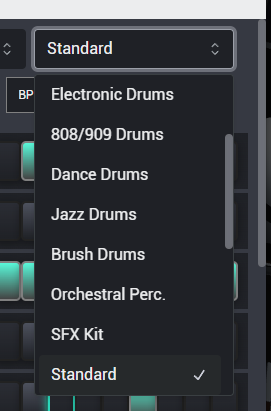MIDI Step Sequencer
Introduction
In the step sequencer, you can create patterns by editing multifunctional steps in the step grid. Each row represents a channel that controls a sound (which can be a drum kit piece or a note on an instrument).
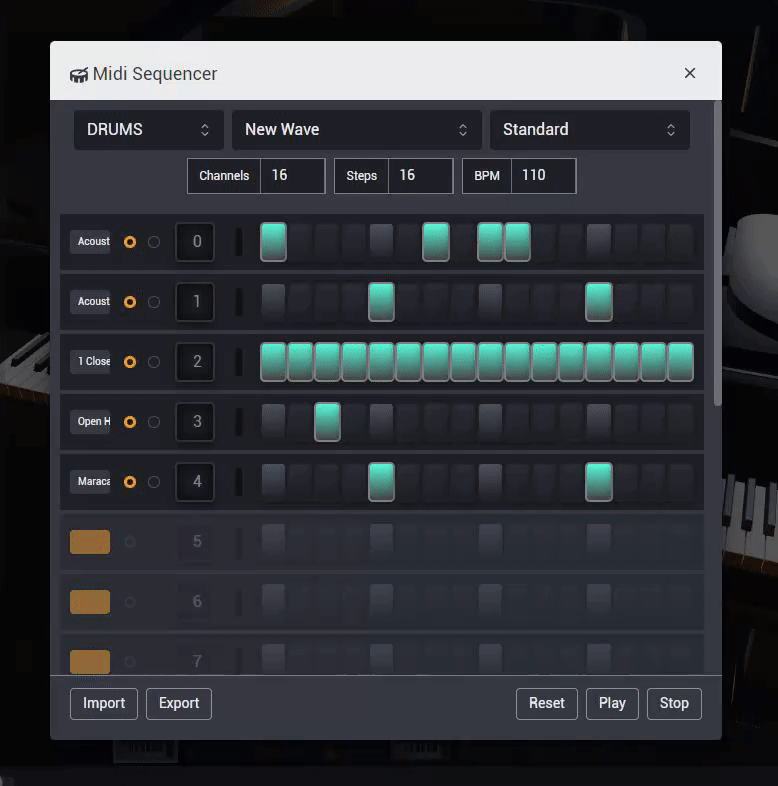
Getting Started
First, the step sequencer does not use a separate list of audio samples. It uses the instruments that are loaded with your current soundfont. Each channel in the sequencer contains a number of steps, and will emit a sound when a step is active during playback. You can further customize each step by setting its note value (default is 60 or C3) and/or its velocity (default: 100).
If you're in drum mode and the loaded soundfont does not have any percussion instruments (standard bank of 120 or 128), then you probably won't hear any sound.
Where do I find it?
You can either find it by going to the right side widgets of common actions:

Or by going to the left of the bottom bar and clicking the hamburger menu:
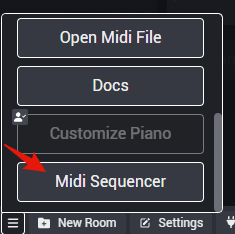
Loading instruments
To load an instrument, just click on the left most button in a channel:
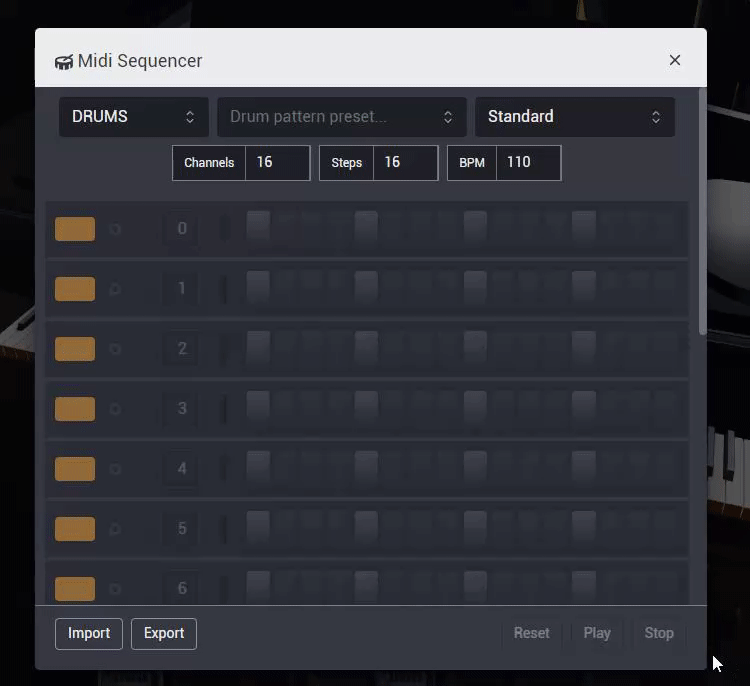
The list of selectable instruments depends on the current sequencer mode (MIDI or DRUM) that you're in.
Warnings
Certain scenarios may cause a warning to be displayed in the step sequencer. One example is if you have the
drum channel disabled in the settings but you're trying to use the DRUM mode in the sequencer.

Warning messages like that are just to bring more awareness to the state of the application, so you're not left confused as to why something may not be happening as you're expecting.
Import/Export
You can also import or export your patterns. When exporting, it'll be saved as a json file that contains the current state of the pattern you have set.
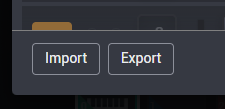
There is a versioning system that will be tied to the exported files. In the future, incompatiable or outdated versions may not be able to imported properly. More on that soon.
Components
Channels, Steps, and BPM
Here, you can change the total number of channels available, the number of steps per channel, and the target BPM for the sequencer:

Context menu
There are context menu options available for further customization. If you right click on the channel pad or instrument load button then you'll see these options:
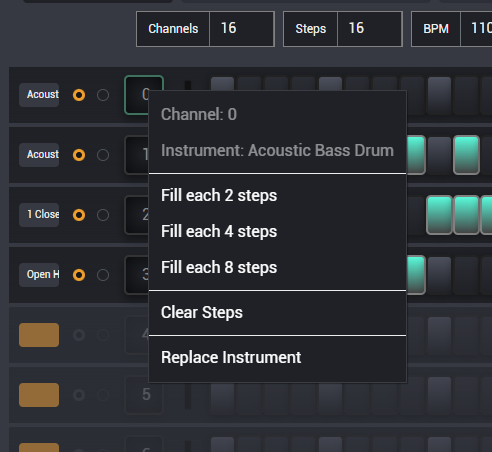
and if you click on an individual step, then you'll see this:
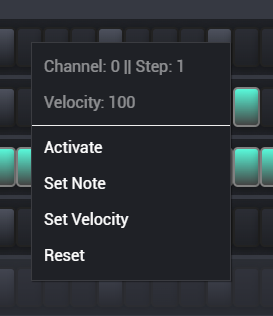
Sequencer Modes
Intro
There are currently two modes: DRUM and MIDI. In DRUM mode, you are able to select sounds based on the
currently loaded bank in the percussion channel. As of now, the keys are mapped based on the standard of the
General Midi Percussion Map:
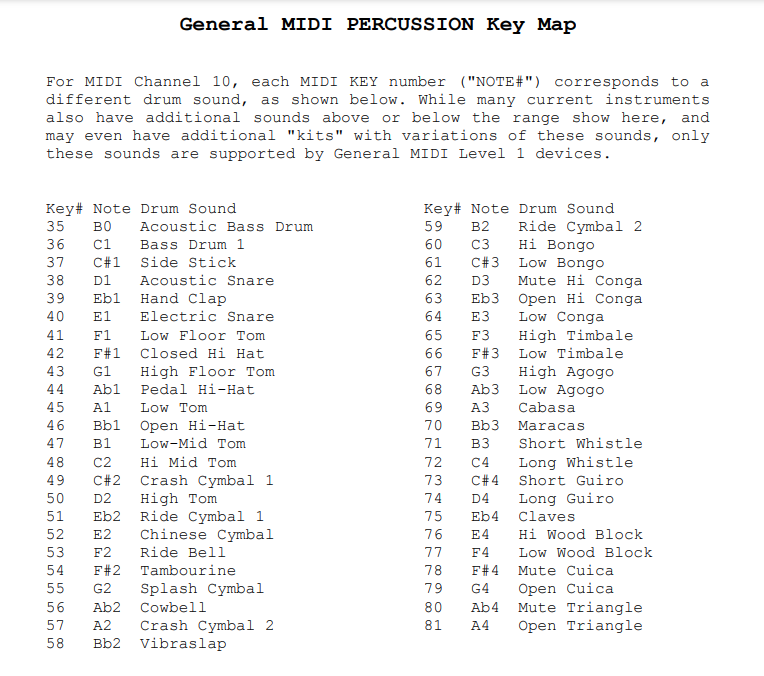
While MIDI mode just uses everything else available in the soundfont.
Drum Mode
Preset Patterns
There are several included patterns that you can find here:
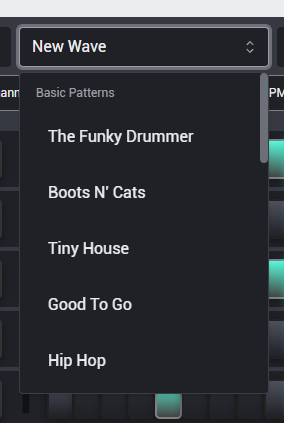
Most of these are based from the book - Pocket Operations: A Collection of Drum Machine Patterns. There'll be
more patterns added in the future.
Sound Kits
Depending on the soundfont you have loaded, there may be a variety of percussion sound banks that you can select from:
